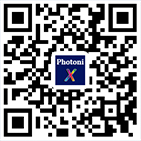| [1] |
Lichtman JW, Conchello J-A. Fluorescence microscopy. Nat Methods. 2005;2(12):910–9.
|
| [2] |
Verweij FJ, Balaj L, Boulanger CM, Carter DR, Compeer EB, D’angelo G, et al. The power of imaging to understand extracellular vesicle biology in vivo. Nat Methods. 2021;18(9):1013–26.
|
| [3] |
Calarco JA, Samuel AD. Imaging whole nervous systems: insights into behavior from worms to fish. Nat Methods. 2019;16(1):14–5.
|
| [4] |
Han J, Kim S, Jung Kim H, Soo Nam H, Lee MW, Song JW, et al. Label-free characterization of atherosclerotic plaques via high-resolution multispectral fluorescence lifetime imaging microscopy. Arterioscler Thromb Vasc Biol. 2023;43(7):1295–307.
|
| [5] |
Lee S, Lee MW, Cho HS, Song JW, Nam HS, Oh DJ, et al. Fully integrated high-speed intravascular optical coherence tomography/near-infrared fluorescence structural/molecular imaging in vivo using a clinically available near-infrared fluorescence–emitting indocyanine green to detect inflamed lipid-rich atheromata in coronary-sized vessels. Circ Cardiovasc Interv. 2014;7(4):560–9.
|
| [6] |
Chen B-C, Legant WR, Wang K, Shao L, Milkie DE, Davidson MW, et al. Lattice light-sheet microscopy: imaging molecules to embryos at high spatiotemporal resolution. Science. 2014;346(6208):1257998.
|
| [7] |
Klonis N, Rug M, Harper I, Wickham M, Cowman A, Tilley L. Fluorescence photobleaching analysis for the study of cellular dynamics. Eur Biophys J. 2002;31:36–51.
|
| [8] |
Li X, Li Y, Zhou Y, Wu J, Zhao Z, Fan J, et al. Real-time denoising enables high-sensitivity fluorescence time-lapse imaging beyond the shot-noise limit. Nat Biotechnol. 2023;41(2):282–92.
|
| [9] |
Song J, Kang J, Kang U, Nam HS, Kim HJ, Kim RH, et al. SNR enhanced high-speed two-photon microscopy using a pulse picker and time gating detection. Sci Rep. 2023;13(1):14244.
|
| [10] |
Yokota H, Fukasawa A, Hirano M, Ide T. Low-light photodetectors for fluorescence microscopy. Appl Sci. 2021;11(6):2773.
|
| [11] |
Meiniel W, Olivo-Marin J-C, Angelini ED. Denoising of microscopy images: a review of the state-of-the-art, and a new sparsity-based method. IEEE Trans Image Process. 2018;27(8):3842–56.
|
| [12] |
Ryu J, Kang U, Kim J, Kim H, Kang JH, Kim H, et al. Real-time visualization of two-photon fluorescence lifetime imaging microscopy using a wavelength-tunable femtosecond pulsed laser. Biomed Opt Express. 2018;9(7):3449–63.
|
| [13] |
LeCun Y, Bengio Y, Hinton G. Deep learning nature. 2015;521(7553):436–44.
|
| [14] |
Goodfellow I, Pouget-Abadie J, Mirza M, Xu B, Warde-Farley D, Ozair S, et al. Generative adversarial networks. Commun ACM. 2020;63(11):139–44.
|
| [15] |
Jain V, Seung S. Natural image denoising with convolutional networks. Advances in neural information processing systems. 2008;21.
|
| [16] |
Ledig C, Theis L, Huszár F, Caballero J, Cunningham A, Acosta A, et al. Photo-realistic single image superresolution using a generative adversarial network. In: Proceedings of the IEEE/CVF Conference on Computer Vision and Pattern Recognition (CVPR). IEEE; 2017. p. 4681–90.
|
| [17] |
Lee W, Nam HS, Seok JY, Oh W-Y, Kim JW, Yoo H. Deep learning-based image enhancement in optical coherence tomography by exploiting interference fringe. Communications Biology. 2023;6(1):464.
|
| [18] |
Liang J, Cao J, Sun G, Zhang K, Van Gool L, Timofte R. Swinir: Image restoration using swin transformer. In:Proceedings of the IEEE/CVF International Conference on Computer Vision (ICCV). IEEE; 2021. p. 1833–44.
|
| [19] |
Chaudhary S, Moon S, Lu H. Fast, efficient, and accurate neuro-imaging denoising via supervised deep learning. Nat Commun. 2022;13(1):5165.
|
| [20] |
Tian C, Fei L, Zheng W, Xu Y, Zuo W, Lin C-W. Deep learning on image denoising: An overview. Neural Netw. 2020;131:251–75.
|
| [21] |
Weigert M, Schmidt U, Boothe T, Müller A, Dibrov A, Jain A, et al. Content-aware image restoration: pushing the limits of fluorescence microscopy. Nat Methods. 2018;15(12):1090–7.
|
| [22] |
Fan C-M, Liu T-J, Liu K-H. SUNet: Swin Transformer UNet for image denoising. In: Proceedings of the IEEEInternational Symposium on Circuits and Systems (ISCAS). IEEE; 2022. p. 2333–7.
|
| [23] |
Lecoq J, Oliver M, Siegle JH, Orlova N, Ledochowitsch P, Koch C. Removing independent noise in systems neuroscience data using DeepInterpolation. Nat Methods. 2021;18(11):1401–8.
|
| [24] |
Li X, Zhang G, Wu J, Zhang Y, Zhao Z, Lin X, et al. Reinforcing neuron extraction and spike inference in calcium imaging using deep self-supervised denoising. Nat Methods. 2021;18(11):1395–400.
|
| [25] |
Huang T, Li S, Jia X, Lu H, Liu J. Neighbor2Neighbor: Self-supervised denoising from single noisy images. In: Proceedings of the IEEE/CVF Conference on Computer Vision and Pattern Recognition (CVPR). IEEE; 2021. p. 14781–90.
|
| [26] |
Krull A, Buchholz T-O, Jug F. Noise2Void: Learning denoising from single noisy images. In: Proceedings of the IEEE/CVF Conference on Computer Vision and Pattern Recognition (CVPR). IEEE; 2019. p. 2129–37.
|
| [27] |
Lehtinen J, Munkberg J, Hasselgren J, Laine S, Karras T, Aittala M, et al. Noise2Noise: Learning image restorationwithout clean data. arXiv preprint arXiv:1803.04189. 2018.
|
| [28] |
Eom M, Han S, Park P, Kim G, Cho E-S, Sim J, et al. Statistically unbiased prediction enables accurate denoising of voltage imaging data. Nat Methods. 2023;20(10):1581–92.
|
| [29] |
Zhang G, Li X, Zhang Y, Han X, Li X, Yu J, et al. Bio-friendly long-term subcellular dynamic recording by self-supervised image enhancement microscopy. Nat Methods. 2023;20(12):1957–70.
|
| [30] |
Li X, Hu X, Chen X, Fan J, Zhao Z, Wu J, et al. Spatial redundancy transformer for self-supervised fluorescence image denoising. Nature Computational Science. 2023;3(12):1067–80.
|
| [31] |
Liu Z, Lin Y, Cao Y, Hu H, Wei Y, Zhang Z, et al. Swin Transformer: Hierarchical vision transformer using shifted windows. In: Proceedings of the IEEE/CVF International Conference on Computer Vision (ICCV). IEEE; 2021. p. 10012–22.
|
| [32] |
Qu L, Zhao S, Huang Y, Ye X, Wang K, Liu Y, et al. Self-inspired learning for denoising live-cell super-resolution microscopy. Nat Methods. 2024;21(10):1895–908.
|
| [33] |
Lequyer J, Philip R, Sharma A, Hsu W-H, Pelletier L. A fast blind zero-shot denoiser. Nature Machine Intelligence. 2022;4(11):953–63.
|
| [34] |
Song A, Gauthier JL, Pillow JW, Tank DW, Charles AS. Neural anatomy and optical microscopy (NAOMi) simulation for evaluating calcium imaging methods. J Neurosci Methods. 2021;358: 109173.
|
| [35] |
Choi J, Choi M-S, Jeon J, Moon J, Lee J, Kong E, et al. In vivo longitudinal 920 nm two-photon intravital kidney imaging of a dynamic 2, 8-DHA crystal formation and tubular deterioration in the adenine-induced chronic kidney disease mouse model. Biomed Opt Express. 2023;14(4):1647–58.
|
| [36] |
Kang J, Kang U, Nam HS, Kim W, Kim HJ, Kim RH, et al. Label-free multimodal microscopy using a single light source and detector for biological imaging. Opt Lett. 2021;46(4):892–5.
|
| [37] |
Luu P, Fraser SE, Schneider F. More than double the fun with two-photon excitation microscopy. Communications Biology. 2024;7(1):364.
|
| [38] |
Rahaman N, Baratin A, Arpit D, Draxler F, Lin M, Hamprecht F, et al. On the spectral bias of neural networks. International conference on machine learning: PMLR; 2019:5301–10.
|
| [39] |
Xia X, Li J, Wu J, Wang X, Xiao X, Zheng M, et al. TRT-ViT: TensorRT-oriented vision transformer. arXiv preprint arXiv:220509579. 2022.
|
| [40] |
Chen X, Qiao C, Jiang T, Liu J, Meng Q, Zeng Y, et al. Self-supervised denoising for multimodal structured illumination microscopy enables long-term super-resolution live-cell imaging. PhotoniX. 2024;5(1):4.
|
| [41] |
Krull A, Basevi H, Salmon B, Zeug A, Müller F, Tonks S, et al. Image denoising and the generative accumulation of photons. In: Proceedings of the IEEE/CVF Winter Conference on Applications of Computer Vision (WACV). IEEE; 2024. p. 1528–37.
|
| [42] |
Chen X, Wang X, Zhou J, Qiao Y, Dong C. Activating more pixels in image super-resolution transformer. In: Proceedings of the IEEE/CVF Conference on Computer Vision and Pattern Recognition (CVPR). IEEE; 2023. p. 22367–77.
|
| [43] |
Kranig SA, Lajqi T, Tschada R, Braun M, Kuss N, Pöschl J, et al. Leukocyte infiltration of cremaster muscle in mice assessed by intravital microscopy. JoVE (Journal of Visualized Experiments). 2020;158: e60509.
|
| [44] |
Jang MA, Song JW, Kim RH, Kang DO, Kang U, Kim HJ, et al. Real-time imaging assessment of stress-inducedvascular inflammation using heartbeat-synchronized motion compensation. Arteriosclerosis, Thrombosis, and Vascular Biology. 2024;44(12):2493–506.
|









 下载:
下载:



